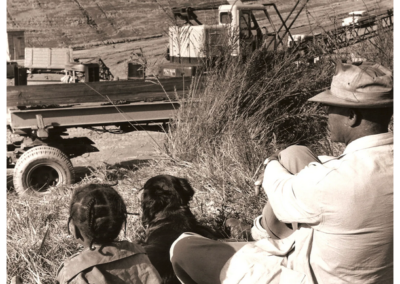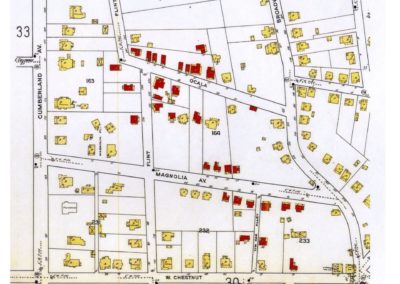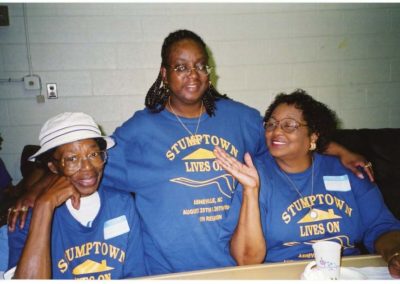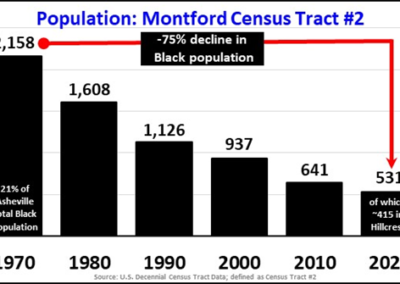This is a brief overview of urban renewal in Montford (census tracts 2 and 3). The full story begins with chattel slavery and includes generations of racial segregation, systemic disinvestment, and discrimination (such as redlining) which made the historically Black areas of Montford vulnerable to displacement through urban renewal and later gentrification.

1950s
As outlined in “Twilight of a Neighborhood,” the 2010 issue of Crossroads, a publication of the NC Humanities Council, the Hill Street neighborhood (in census tract 2) was one of the first historically Black sections of Asheville to be impacted by the arc of urban renewal, with the construction of the Cross-Town Expressway starting in 1957. The publication (linked below) includes a map of Stumptown and Hill Street showing Black churches, schools, community organizations and businesses in Montford that were, for the most part, destroyed during urban renewal.
1960s
In the aftermath of the Cross-Town Expressway, as urban renewal swept through Asheville, Hill Street and Stumptown were experiencing issues due to systemic neglect. For example, Stumptown was one of the last communities in Asheville to be connected to regional wastewater systems. A 1968 article in the Citizen-Times describes a group of Stumptown residents complaining to the city about inequitable, inadequate sanitation services. Like other historically Black neighborhoods impacted by urban renewal, Black homeowners were prevented access to resources for upkeep and white landlords allowed properties to fall into disrepair.
During this time period some Black families moved from Stumptown and Hill Street into Hillcrest Apartments, rental units opened by the Asheville Housing Authority in 1959, accessible only by a bridge over the new expressway.

1970s
In 1971, the City of Asheville hired Ray Kisiah as director of Asheville Parks and Recreation. A plan had been made for a recreation park which would cover a significant part of the footprint of Stumptown. Oralene Simmons, a Montford resident who worked for Model Cities, organized community support for the center, of which she later became a much beloved director.
The City of Asheville acquired property for the project between during the 1970s. Over 80 families lost their homes. Kisiah combined federal grants from programs including Model Cities, the Land and Water Conservation Fund, and Housing and Urban Development (HUD) to pay for the million dollar plan. The groundbreaking was held in 1977, and the center was dedicated in 1978.
Another way Montford was impacted by urban renewal was the fact that significant numbers of Black families moved into homes and apartments throughout the neighborhood (not only in Stumptown and Hill Street) after they were displaced from other neighborhoods. In 1969, Katie Worley and her siblings were the first Black family to move onto Montford Avenue.
After delays because of resistance from neighbors, the Housing Authority opened Klondyke Apartments at the northern end of Montford in 1974. As he shares in his video interview on this site, David Jones, Jr., then with the Housing Authority, helped facilitate the integration of Montford Hills during the 1970s.

1980s
By 1980, the population in census tracts 2 and 3 was approximately 70% Black, with census tract 2 (the southern part of Montford) being almost 75% Black. That percent began decreasing every year.
The Head of Montford Project, Montford’s “official” urban renewal project was implemented in census tract 2 from 1987 – 1993 (see a map which indicates the affected area). One of its primary goals was “preserving the neighborhood’s distinctive diversity – it’s mixture of races, classes, and lifestyles.” More on the scope and impact of this project to come.





